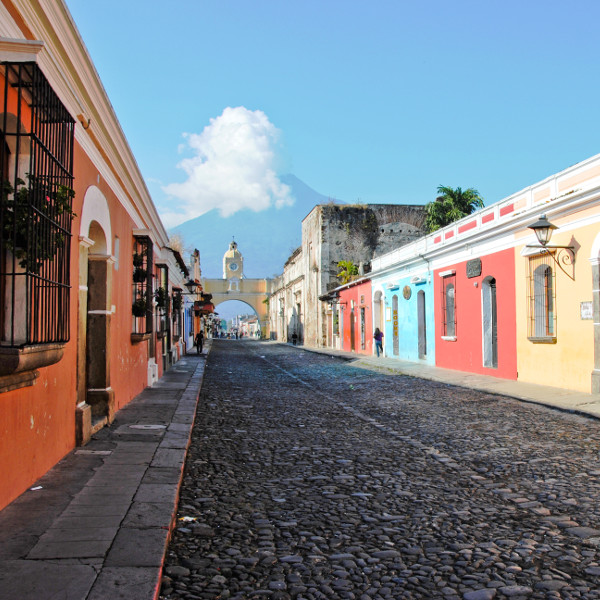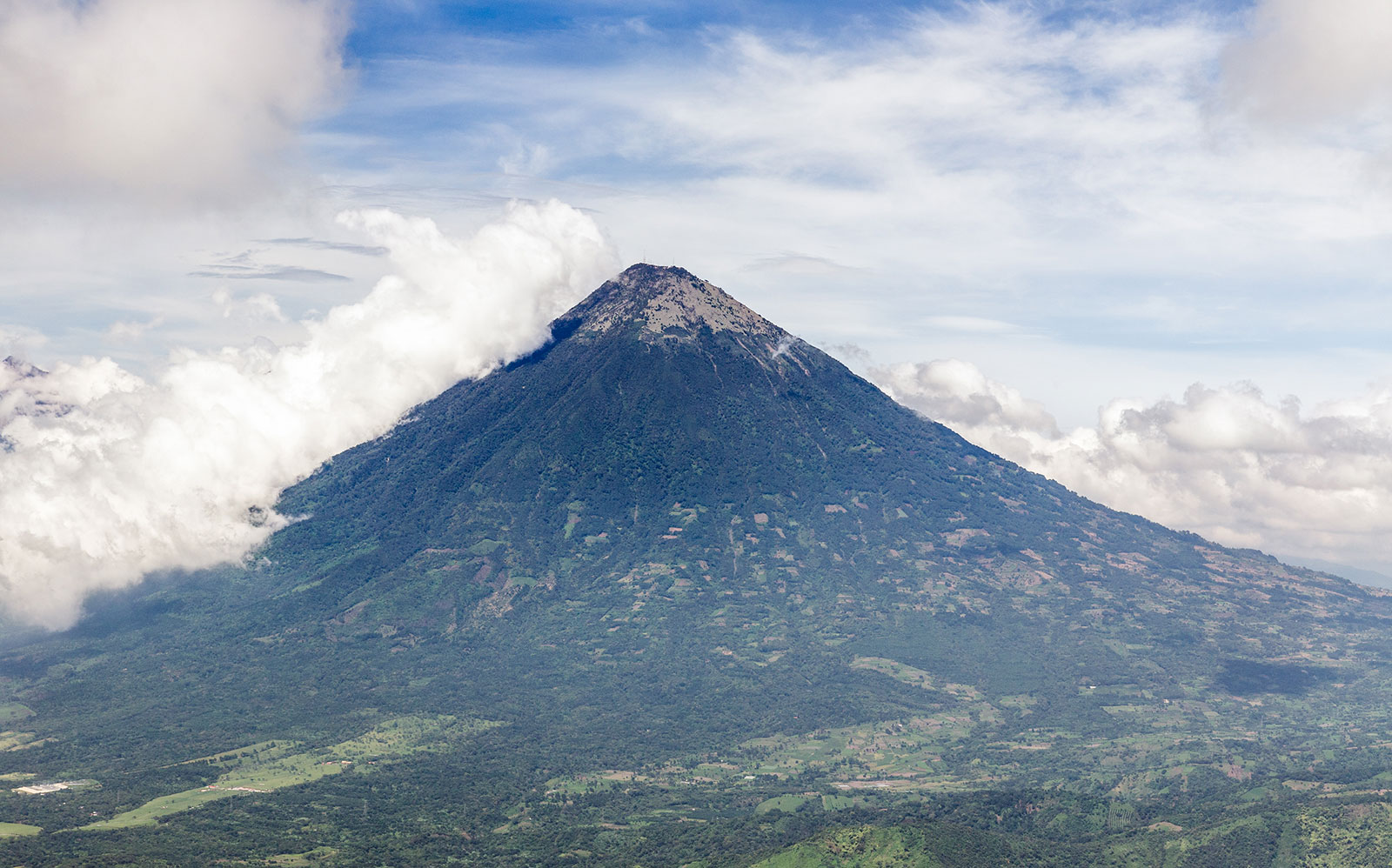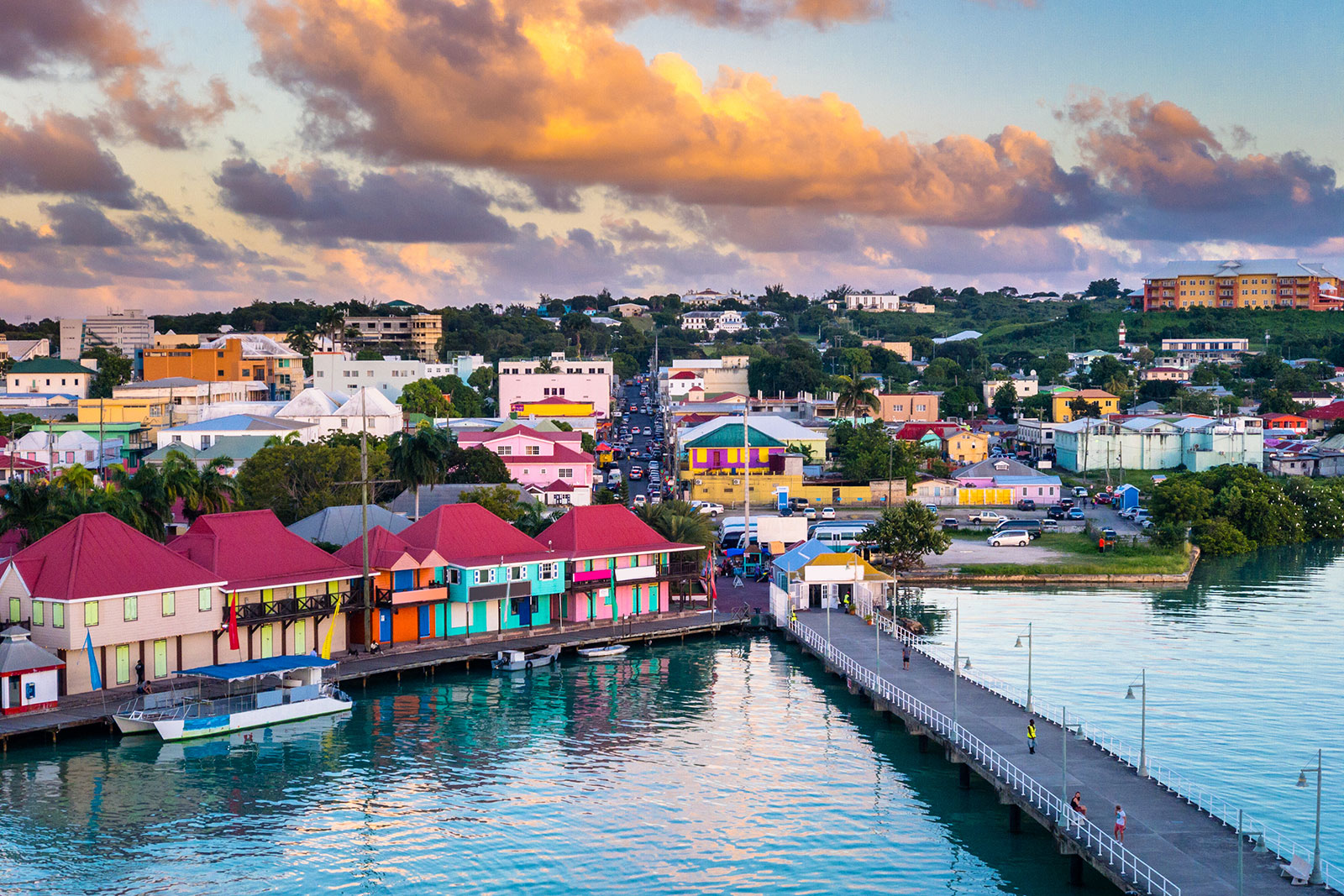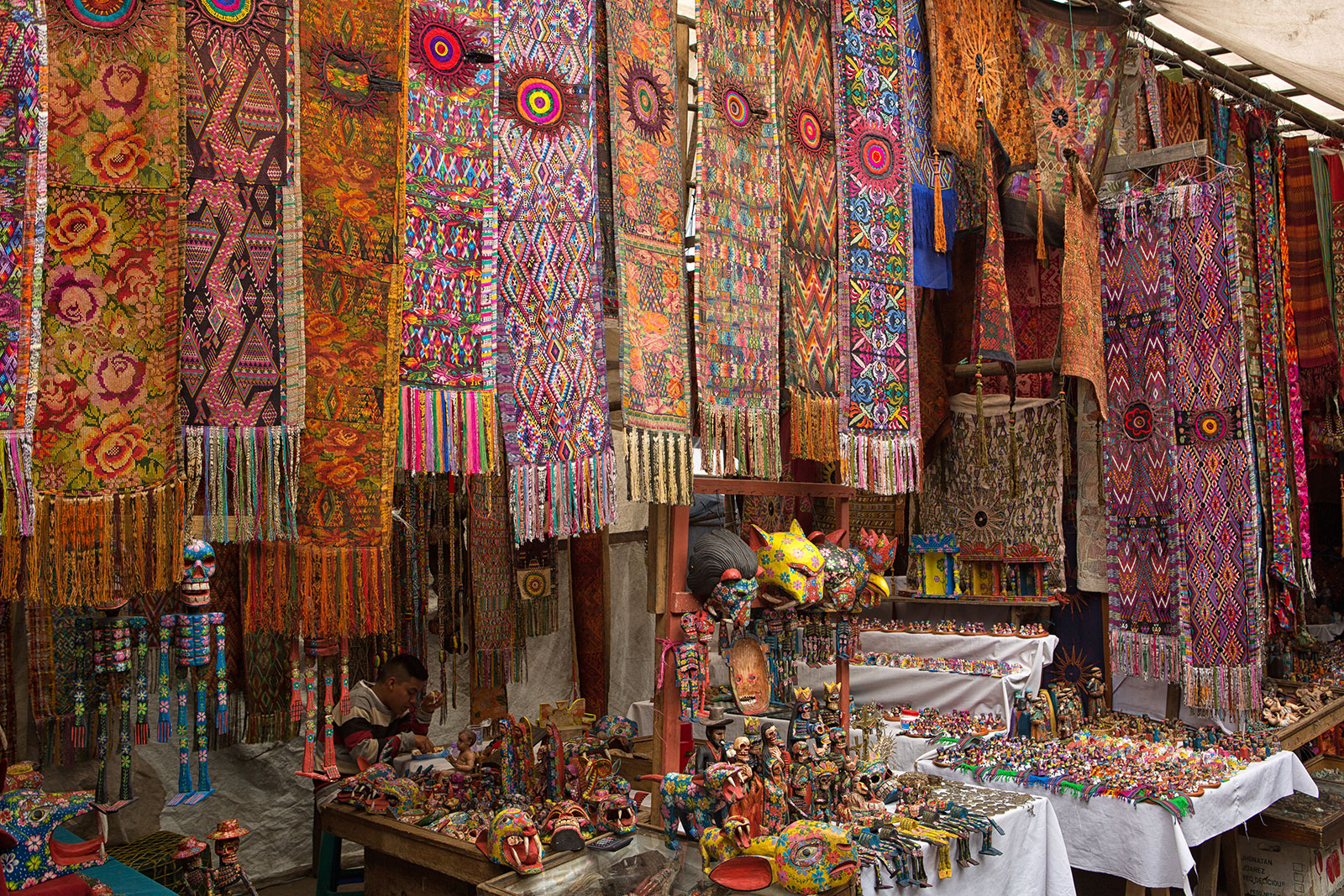
Things to Do in Antigua on a Budget
An hour’s drive from the capital of Guatemala and nestled in a valley at the feet of three volcanoes lies Antigua Guatemala or “ancient Guatemala.” Not to be confused with the other Antigua, an island nation in the Caribbean, this little town sits in the central highlands of Guatemala and is a UNESCO heritage site. Mayan Ruins meet Spanish Colonial architecture on a canvas of lush, wild nature at the nation’s erstwhile capital.
Guatemala has a rich history that can be traced back very, very far, and the people of this country are famous for holding on to their traditions with a tight grasp. Many of them still wear their traditional garb and work in trades passed down to them from their ancestors. The local food is an amalgamation of all the influences Guatemala has undergone through the centuries, and the people’s authentic traditionalism is felt clearly in the cuisine as well. Have lunch at one of the comedores, or local, family run restaurants to sample real Guatemalan dishes.
Nowhere can the advanced age of this country be felt more than in Antigua, where not much has changed since the eighteenth century, or Antigua’s heyday before the city fell out of the Jesuit’s good graces. This was due to a row of devastating earthquakes that were then thought to have more to do with God being angry than the three volcanoes that surround the valley this little jewelry box of a town sits. These volcanoes, of which one is active, are some of the thirty-seven lava spewing mountains emblematic of Guatemala, the tallest of which being visible from Antigua. Needless to say, it is easy to focus on nature in Guatemala. This is wonderful if you’re on a budget because nature is, for the time being, free.
One thing to keep in mind when traveling to Antigua is to avoid doing so during or around major Catholic holidays, as tourism and prices increase. December, January, and the months of June and July are particularly popular with visitors. While this does limit you somewhat, you will find that it still leaves much of the year for you to plan your trip. November to April is the dry season, with April and the first half of May being the very best time to visit since the weather is still lovely, but prices are significantly lower. Alternatively, you can come in October and November if you’re in it for the hikes, since the cooler weather will ensure you will have the energy for outdoor exploration. Whenever you come, Guatemala is a great budget travel option, with the exchange rate working in your favor: at the time of writing, one US dollar gets you 7,7 GTQ or Guatemalan Quetzales. If you’ve got your heart set on visiting Antigua, read on for some tips and suggestions on how to do it in style for much, much less.
Best Hotels in Antigua Guatemala
Antigua is the most popular destination for tourists in Guatemala and as such, offers a wide range of lodging options, especially considering how small the town is. The hotels mentioned below are all lovely choices that will cost you much less than staying in any major US city would, especially outside of high season. That said, Antigua is filled with charming little bed and breakfast type places that cost even less, like the Casa Elena, an adorable cottage with authentic Guatemalan decor. Due to the town being a favorite with backpackers and students of Spanish, Antigua is famous for its language schools. Places like that fill up quickly and strangely demand more of a pre-booking than the following hotels:
Cacao Boutique Hotel ($)
A wonderful little place on the edge of town, the Cacao Boutique Hotel is much cheaper than it looks, with a rustic Guatemalan interior and a roof terrace where you can enjoy a complimentary breakfast before heading out to explore.
Meson Panza Verde ($)
This hotel has a famous restaurant that is worth dining at even if you don’t choose to stay here – which you certainly should consider, what with the chandeliers and earth-toned cool of this place.
Hotel Cirilo ($$)
Blending exposed brick with modern, cool glass has never looked this good. You may not want to leave this place once you check in. The one ever-so-slight downside is that this place is a bit further out of town, but that may be a plus for some.
Porta Hotel Antigua ($$$)
This luxury colonial hotel is so famous it has its own Wikipedia page. You can get a reasonable deal here if you come at the right time, during low season. It’s certainly worth a splurge, and you can always save elsewhere.
What to Eat & Drink in Antigua
The first stop on any budget-conscious gourmet’s list should always be the local market. What’s amazing about Antigua is that the markets here are known to be especially nice, along with being extraordinarily cheap. Due to the nourishment from the volcanic soil, the quality of produce is fantastic here, sort of like Vesuvian tomatoes are known to be the best in Italy. El Mercado and La Merced markets are the two major ones in Antigua, and both offer different experiences. Market days are Wednesdays and Saturdays, when you have the largest variety and best food available for sampling, though the markets are open every day. Street food is amazing in Guatemala, and the most authentic choice, too: try some Pupusas or Rellenitos de Plantano which are stuffed corn tortillas and sweet plantain mash stuffed with chocolate and beans, respectively. Or, have a full meal of Pepian, a type of spicy meat stew considered by most to be the national dish.
Once you’ve hit the markets for lunch, you can explore other vendor areas and see some of the local handicrafts on offer, from intricate jewelry to traditional clothing to electronics we do not ultimately recommend you buy.
As for sit-down meals, we hear the best all-day breakfast in town can be had at Y Tu Pina Tambien, and lunch should be eaten at Café Sky, a rooftop restaurant that has incredible views of the volcanoes to keep you company while you eat. Your best bet for dinner is a place called Restaurante Las Antorchas, where you can eat your heart out on Guatemalan barbecue. For after-dinner drinks, La Sala and Cafe No Se are the places to be if you long to try Mezcal, the world-famous local liquor. Fun fact – mezcal is made of agave, which is often thought to be a type of cactus but is, in reality, a species of plant unto its own. Back to the bars: Cafe No Se lies somewhere between prohibition era speakeasy and European ruin-pub in terms of feel, whereas La Sala is the place they would shoot a movie scene set in a typical Guatemalan bar.
Things to Do & See in Antigua
Antigua is a gorgeous and supremely walkable city where every square will trick you into believing you’ve found the most beautiful one. Then, you turn a corner and see the next shining example of Spanish colonial architecture. One of the best things you can do to enjoy as much of the sights at once as possible is to take a walk up to Cerro de la Cruz, or hill of the cross, where you’ll be able to admire the city below framed by the monolithic volcanoes.
For the more daring among you, there is always the option of hiking one of those. If you’re out for a real challenge, you can trek to the top of Volcan Fuego, a steaming, active volcano. Something about the urgent reality that the volcano could erupt at any time makes the hike feel thrilling and like your mother should not know you’re up there. You should probably not attempt this hike on your own, but guides are fortunately available for approximately $10 to go up with you and provide marshmallows to hold over pockets of lava. Really. You can rent a horse for around the same amount, which may be helpful if the hike seems too strenuous.
If you’re looking for something a bit less extreme, there is Pacaya, another – dormant – volcano. It takes about an hour and a half of relatively easy trekking to reach the peak and is by far the most popular hiking destination around Antigua. If you’re really in the mood for exertion, why not hike up to Volcán Actenango, the tallest one in Guatemala, which is something when you consider that there are 36 others. This particular one offers the most incredible views of the jungle growing wild all around you.Just an hour’s drive from Antigua is Lake Atitlan, a gorgeously placid volcanic body of water, the shores of which are still home to some of the old hippies who showed in the 60s and haven’t left the surroundings of this mystical lake since. Try and come to Atitlan on a Thursday or a Sunday, and while you’re around the lake, make sure to visit Chichicastenango, an indigenous village that hosts a famous market on those days. A sort of massive flea market meets village fair; here you can find everything from handicrafts to livestock. Make sure to keep a big chunk of your day reserved for it, as this immense market is not the kind of place you can swing by for a quick look.
A little further afield is Semuc Champey, a cluster of limestone pools in the thick of the jungle. While getting there may be a challenge, the sight is worth it. The pools are very remote and far away from any real civilization, but tours can be arranged with reputable guides for around $30.
If you long for traditional snacks, then head to La Tortilla Cooking School to try your hand at making Guatemalan food. This school offers a sublime opportunity to familiarize yourself with the produce and cooking of the region and get a feel for what Guatemalan cuisine is all about.
Since we’re on the topic of Guatemalan food, this country is famous for Mayan chocolate. You can find the delicious and heady beverage all over town in Antigua, but the best thing to do for true fans of the stuff is to check out the Choco Museum in town. Here, you’ll be able to learn how to make chocolate from the beans of the cacao plant and find out everything there is to know about the history of this drink of the gods. A great perk is that you get to sample all manner of chocolatey treats at the end, for free. Things could be going worse in Antigua.
What about the other famous export, you’re thinking? Yes, we’re about to get to that. Guatemala produces a massive quantity of coffee for the rest of the world to enjoy. The country is home to some of the best coffee in the world. You must, on your stay here, visit a coffee farm, of which there are many around Antigua.
One great example is De La Gente, or of the people, which is a small artisan farm where you can meet the workers, visit the plantations, check out the processing of the beans gathered, and learn all about coffee from the people who work to get it into your mug every day. You will be able to sample an obligatory cup of the stuff at the end of the tour. You’ve certainly never had coffee like that before: fresh from the field of a plantation in Guatemala, home of coffee and volcanoes. Most people who visit Guatemala once return another time, and we can’t blame them: This country has not succumbed to the breakneck speed of life the rest of the world seems so set on, and Guatemala knows that sometimes, you’ve just got to stop and smell the coffee.


